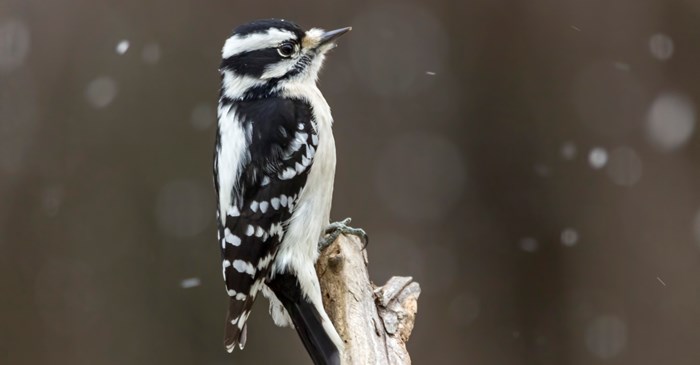The Hairy Woodpecker, like other woodpeckers, are cavity nesters, meaning they’ll excavate a hole in a dying or decaying tree to lay eggs and raise their young. These woodpeckers seem to mate for life, but many will live separately during the winter season.
With nearly identical black and white markings, it may be difficult to tell the Hairy Woodpecker from the Downy Woodpecker. (Not to mention males have a red spot on the back of their heads.) Both species have much in common. The Hairy and the Downy live year-round across most of the continental U.S., but you don't often see them in the summer months, as they ditch the feeders and turn their attention to foraging for insects and larvae.
This winter, if one of these black and white beauties lands on your feeder, here are three ways to tell which is which:
- The back feathers of the Hairy Woodpecker are stiff and hair-like, a contrast to the Downy's softer feathers.
- The Hairy Woodpecker's bill is almost as long as the width of its head, whereas the Downy has a scaled-down bill-to-head ratio.
- The Hairy Woodpecker is about the size of a Northern Cardinal (another common visitor to winter feeders). A Downy is smaller and more sparrow sized.
In the spring, the Hairy Woodpecker may drum on house siding in search of insects or just to make some noise to attract mates and establish territories. For a bigger sound, they may even opt for metal chimneys and drainpipes.
Though they make some homeowners grumble, they also deserve praise for their appetite for destructive pests. They eat the larvae of wood-burrowing beetles as well as that of the corn borer.
For landscaping that appeals to the Hairy Woodpecker, plant blackberry bushes or nut-bearing trees, like oak and beech. In the winter, they'll flock to feeders featuring peanuts and sunflower seeds. Make your feeding station welcoming to the Hairy Woodpecker (and their little brother, Downy) with Lyric Woodpecker Mix and enjoy the wintry sight of these special birds.
